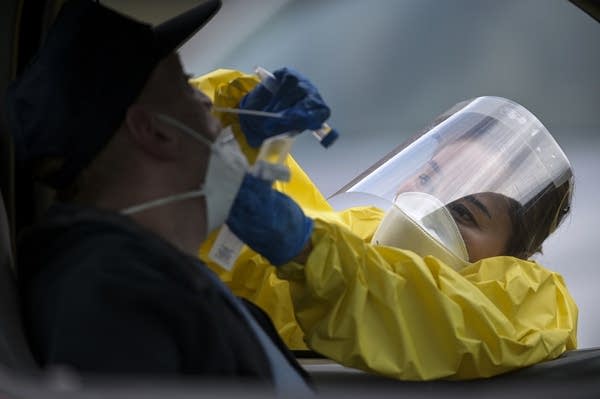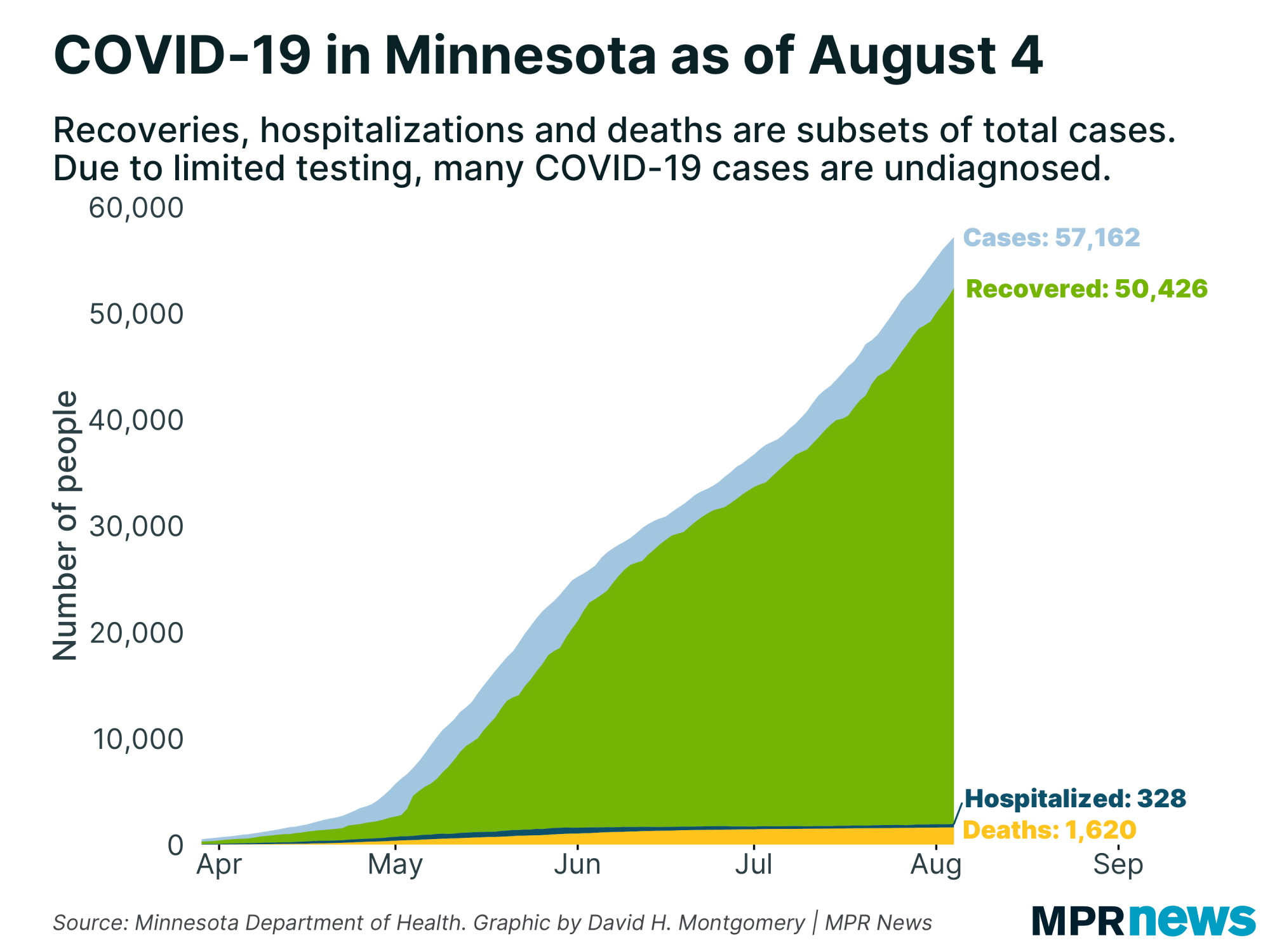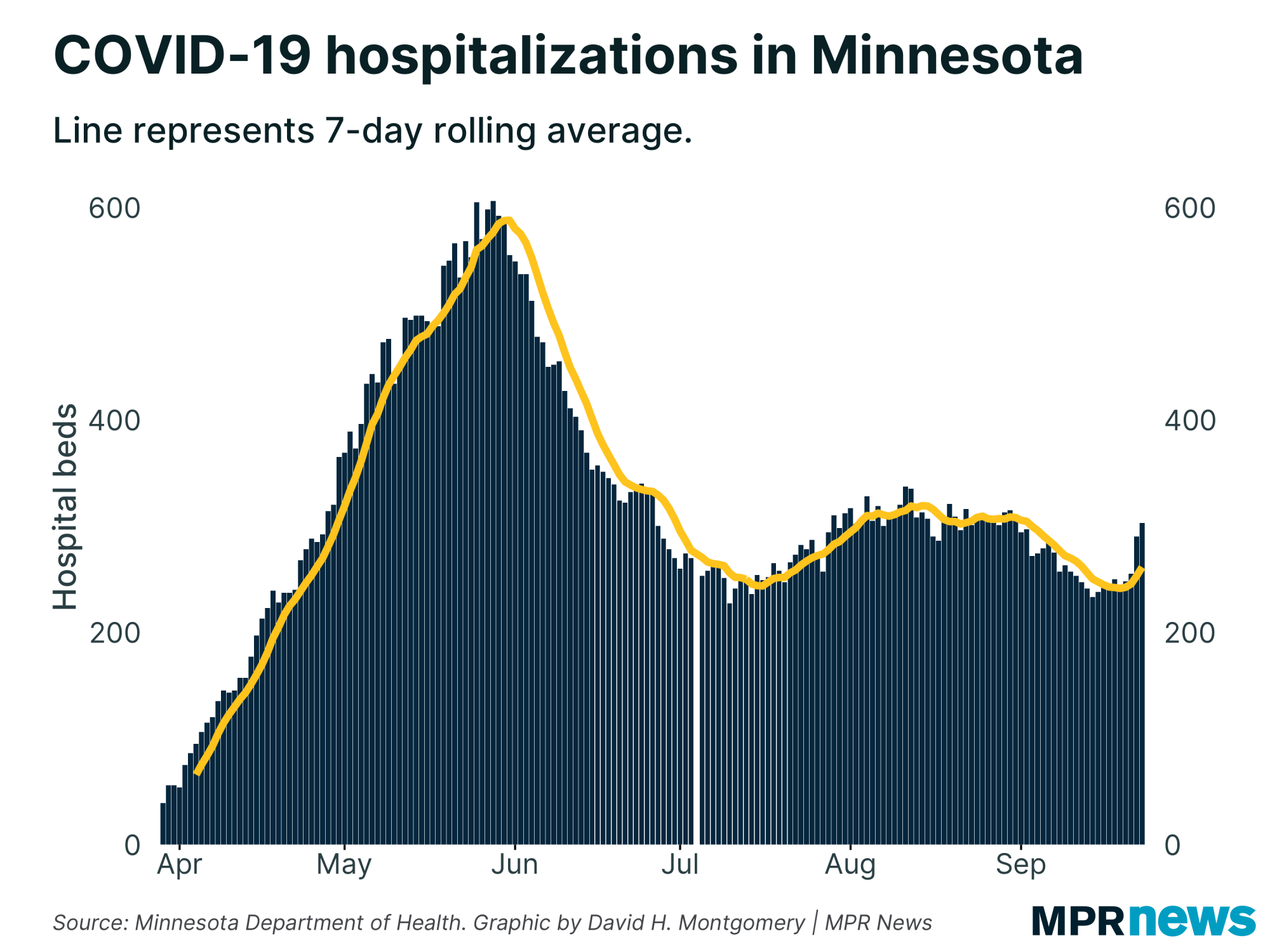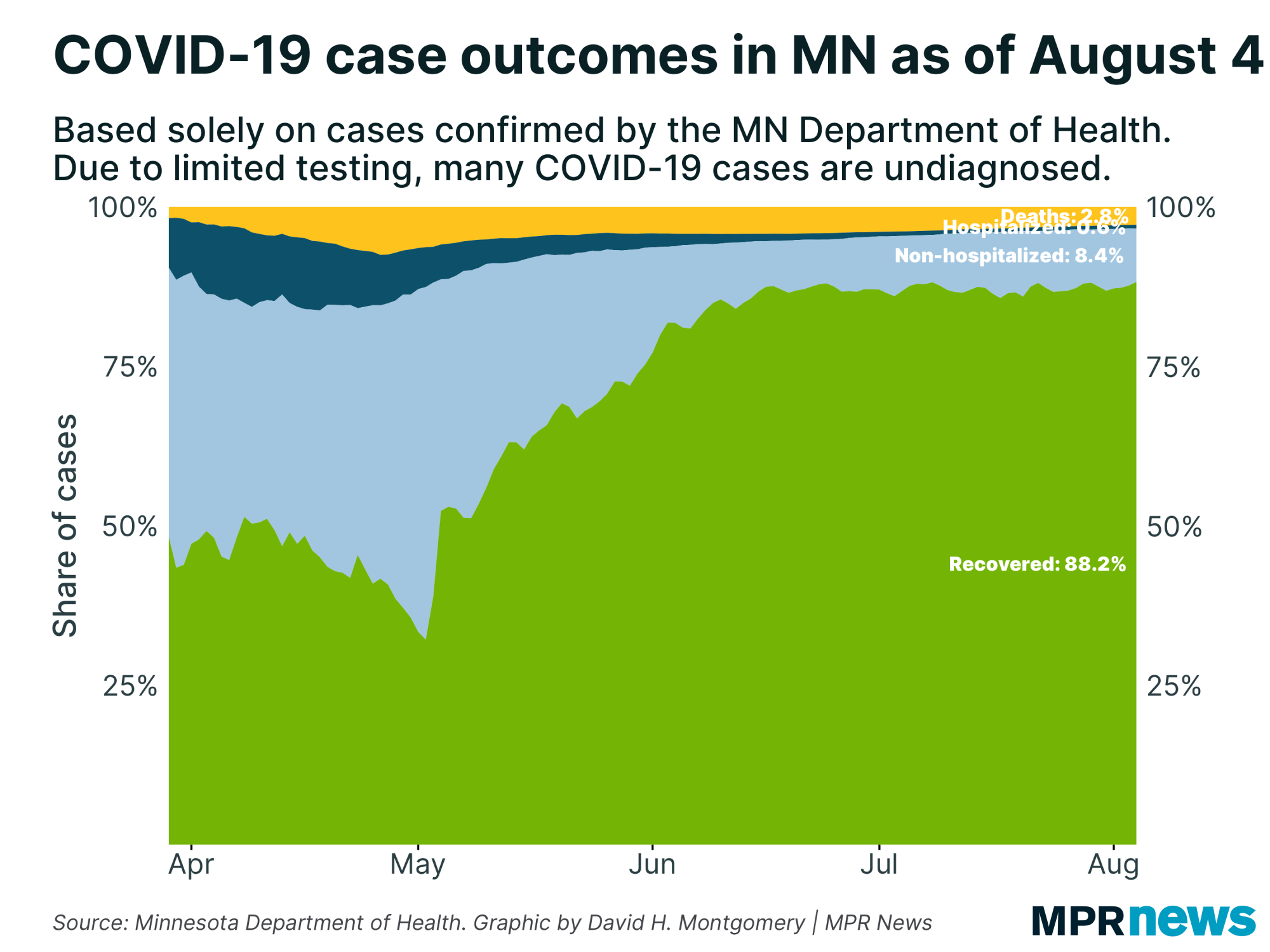June 22 update on COVID-19 in MN: Worries grow as vaccinations, ER visits fall

Go Deeper.
Create an account or log in to save stories.
Like this?
Thanks for liking this story! We have added it to a list of your favorite stories.
Updated 5 p.m.
State health officials said Monday they’re increasingly concerned that people with serious health problems who need emergency room care are not seeking that care because of fears over contracting COVID-19.
National data show a significant drop-off in emergency room visits for heart attacks, strokes and low blood sugar cases during the pandemic compared to the weeks before outbreaks surfaced, said Kris Ehresmann, Minnesota’s infectious disease director. It’s a surprising decline that suggests people are avoiding care, Ehresmann added.
"We want to make sure we’re not seeing deaths due to people not seeking care,” she said. “Our health care systems are ready to care for you safely” despite the pressure from COVID-19.
Ehresmann and Minnesota Health Commissioner Jan Malcolm also reiterated ongoing worries that parents are not keeping up with regular vaccinations for their children because of COVID-19 fears.
Turn Up Your Support
MPR News helps you turn down the noise and build shared understanding. Turn up your support for this public resource and keep trusted journalism accessible to all.
Earlier Monday, Minnesota U.S. Sen. Amy Klobuchar’s office said that declines are being reported in routine vaccinations for children in Minnesota, including a 70 percent drop in measles vaccines administered compared to this time last year.
“We’ve seen a drop-off in children up-to-date on vaccines because parents are not taking them in because they’re not coming to well child visits,” Ehresmann said.
ICU cases continue to fall
Those concerns surfaced on the same day the state Health Department reported four more deaths from COVID-19, putting the total at 1,384 since the pandemic began. That daily increase in deaths was the lowest in more than two months.
While total current hospitalizations rose from Sunday, rolling averages continue to show a steady decline in hospitalizations over the past month.
The number of Minnesotans infected with COVID-19 and needing intensive care — a closely watched metric as officials try to manage the spread of the disease — continued to fall to levels not seen since early May.

Of the 33,227 cases of COVID-19 confirmed since the pandemic began, about 87 percent of people have recovered to the point where they no longer need to be isolated.
Among those who’ve died, nearly 80 percent were living in long-term care or assisted living at the time; nearly all those who’ve died had prior health problems.
Malcolm again implored Minnesotans to continue socials distancing and wear masks in public spaces to help minimize the spread of the disease. While deaths remain concentrated among higher age groups, three people in their 30s have died.
Malcolm also noted that 40 is now the median age of Minnesotans confirmed with the disease.
Meatpacking hot spots remain
Many of the outbreaks outside the Twin Cities metro area are focused around meatpacking plants. Officials have intensified testing in those hot spots, uncovering more infections.
That includes Mower County in southeastern Minnesota, where there were 802 confirmed cases as of Monday.
Mower County is home to Hormel Foods and Quality Pork Processors. Both have been partnering with Mayo Clinic to ramp up employee testing.
While some of Mower County’s positive cases are associated with people who work in the facilities and with the people they live with, county officials say they are also seeing transmission among people who live in the county but work in other counties where coronavirus is present.
Health officials held a COVID-19 testing push in Austin, Minn., over the weekend.
Nobles, in southwestern Minnesota, reported 1,632 confirmed cases Monday. About 1 in 14 people now have tested positive for COVID-19 in the county, although there have only been a few additional cases recorded the past few days.
Worthington’s massive JBS pork processing plant was the epicenter of the Nobles outbreak. The JBS plant shut on April 20 but has since reopened with expanded hygiene and health monitoring measures.
Similar problems have been reported in Stearns County, where COVID-19 cases tied to two packing plants — Pilgrim’s Pride poultry plant in Cold Spring and Jennie-O Turkey in Melrose — skyrocketed in May.
An undisclosed number of workers at both plants have tested positive for the virus. There were about 55 confirmed cases in Stearns County in early May. By Monday, confirmed cases were at 2,137 with 19 deaths.
Kandiyohi County in west-central Minnesota is also seeing cases continue to climb more than a month after officials with the Jennie-O turkey processing plant there said some employees had tested positive for the coronavirus. The county had confirmed three COVID-19 cases then.
As of Monday, the Health Department reported 560 people have now tested positive in the county, the same as Sunday.
Cases have also climbed noticeably in Cottonwood County, home to a pork processing plant in Windom, and in Lyon County, around a turkey processor in Marshall.
Youth sports may resume soon
State health officials have announced that youth sports can resume in the coming weeks. Outdoor sports can return to games and scrimmages starting Wednesday, and indoor sports July 1 or later, under the Health Department’s recommended guidance.
Among the recommendations, the department calls on players to:
Avoid sharing individual water bottles, community snacks or towels
Try to use “dedicated personal equipment” such as bats, mitts and rackets
Find new ways to show sportsmanship, including “tip your hats instead of handshakes.”
While following the guidance can help reduce risk, “in the end everyone has to make their own decisions about what level of risk they are willing to accept,” Health Commissioner Jan Malcolm said.

“Some families, especially those with members who face an elevated risk of severe illness, may choose not to participate. That is perfectly OK, and everyone needs to respect that decision when a family or a player makes it.”
Officials also said the Minnesota Department of Education is working with the Minnesota State High School League to develop activities and sports guidance for schools for the fall sports season.
Officials continue to implore Minnesotans to keep social distancing and wearing masks in public spaces. People who feel flu-like symptoms should get tested and people who feel ill should stay home.
Outdoor, window visits allowed at long-term care facilities
Among those who’ve died in the pandemic, some 80 percent were residents of long-term care or assisted living facilities, and nearly all had underlying health problems.
Health officials last week issued guidance for outdoor visits at long-term care facilities, in addition to earlier guidelines on window visits.
Malcolm said while the coronavirus poses a health risk to residents, isolation is also a concern.
Visitors still must be screened for symptoms, and everyone has to wear masks and keep a minimum distance of 6 feet. Facilities are in charge of developing visitation hours and schedules, and they must have staff nearby and keep visitors from walking through facilities.
The state recommends those who want to visit residents, either through a window or outdoors, set up visits ahead of time through the facility.

Developments from around the state
COVID-19 positivity rates among Floyd protesters remain low
Minnesota's top health officials on Monday said Twin Cities testing sites set up in the wake of protests over the killing of George Floyd are showing positive rates of less than 2 percent, suggesting that a rapid spread of the disease stemming from the protests is not happening in a way officials had feared.
Health Commissioner Jan Malcolm said more than 15,000 people were tested for COVID-19 through four state testing sites following recent mass gatherings in the Twin Cities.
Malcolm said the results were a relief partly because many hospitals are still running close to capacity with COVID-19 and restarting other hospital procedures.
"We were able to meet the need for testing for a lot of people in the community and pleased to see positivity rates for those tests following mass gatherings was under 2 percent,” she said during the Health Department’s daily briefing on Monday.
It's unclear if most demonstrators were tested.
— Nina Moini | MPR News
Minneapolis Institute of Art cuts jobs, budget
The Minneapolis Institute of Art has cut 39 employees as a result of the economic impact of COVID-19.
The museum reports it's cutting $4 million from the coming fiscal year's budget, in anticipation of continued revenue shortfalls for at least the next year.
Seventeen employees took a voluntary separation package; management laid off an additional 22 staff.
The art institute has implemented a pay freeze for all remaining non-union staff and a 15 percent salary cut for its leadership team.
Museum director Katie Luber said the museum still plans to reopen in mid-July, but will only be open to the public four days a week.
"We firmly believe that people at this time of sadness and grief — because of COVID, because of the murder of George Floyd — they need to be able to come to the museum, even if they can't come all the time,” Luber said.
— Marianne Combs | MPR News
COVID-19 in Minnesota
Data in these graphs are based off Minnesota Department of Health cumulative totals released at 11 a.m. daily. You can find more detailed statistics on COVID-19 at the Health Department website.
The coronavirus is transmitted through respiratory droplets, coughs and sneezes, similar to the way the flu can spread.
Government and medical leaders are urging people to wash their hands frequently and well, refrain from touching their faces, cover their coughs, disinfect surfaces and avoid large crowds, all in an effort to curb the virus’ rapid spread.


